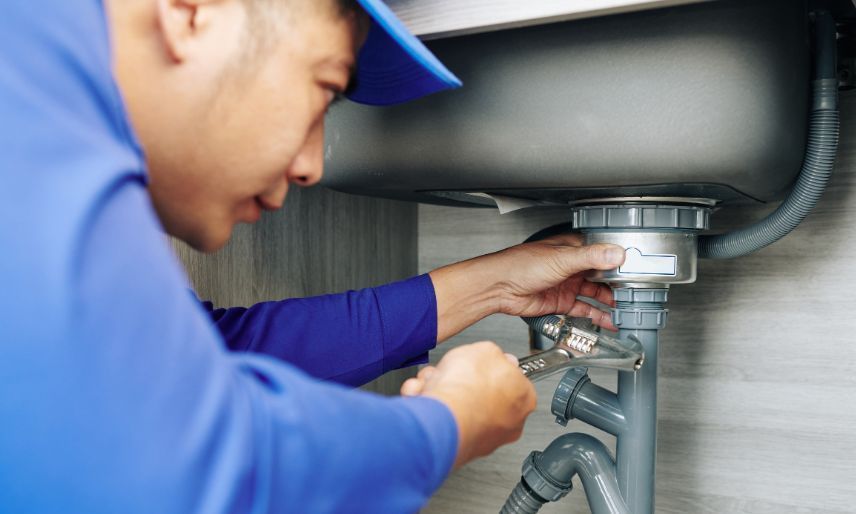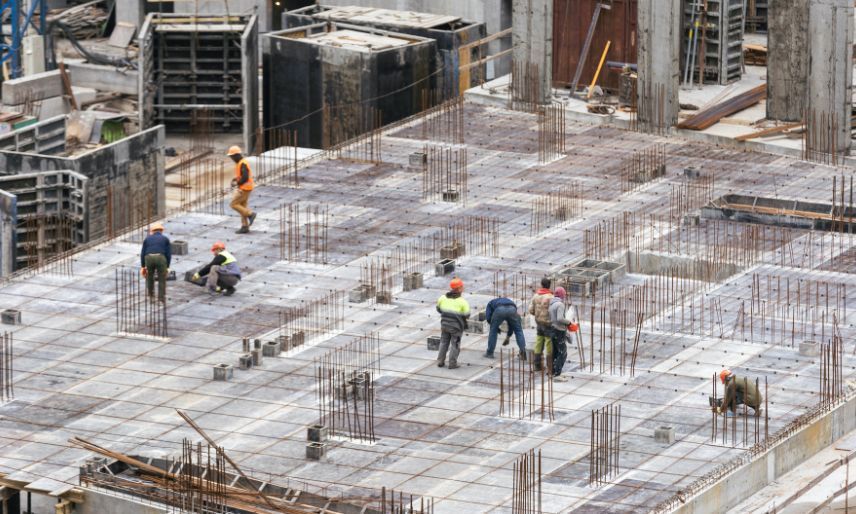Why Are Insurance Rates Increasing for Plumbers Each Year?

The plumbing industry is crucial for maintaining the infrastructure of homes and businesses. However, recent trends show a concerning increase in insurance rates for plumbers. Understanding the reasons behind these rising costs is essential for plumbing professionals to navigate their business effectively.
Understanding the Basics of Plumber's Insurance
Plumber's insurance is designed to protect plumbing businesses from various risks, including property damage, liability claims, and worker injuries. This type of insurance typically comprises a combination of general liability insurance, property insurance, and workers’ compensation insurance.
The significance of having robust insurance coverage in place cannot be overstated. Plumbing tasks often involve complex systems and the handling of potentially hazardous materials. Thus, securing adequate insurance is fundamental for risk management within the trade. Without it, a single incident could lead to devastating financial consequences, potentially jeopardizing the future of a plumbing business.
In addition to financial protection, plumber's insurance also plays a crucial role in regulatory compliance. Many states require specific types of insurance for contractors, and failing to meet these requirements can result in fines or even the loss of a business license. Therefore, understanding the legal landscape surrounding plumber's insurance is essential for any plumbing professional aiming to operate within the law.
The Role of Insurance in Plumbing Business
Insurance serves as a safety net for plumbers. It provides peace of mind, allowing them to focus on their work without the looming fear of financial ruin from unforeseen events. For instance, if a plumber accidentally damages a client's property, liability insurance can cover the associated costs. This not only protects the plumber financially but also helps maintain a positive relationship with clients, as they see the contractor taking responsibility for their work.
Moreover, insurance is not merely a protective measure; it can also enhance a plumbing company's credibility. Clients often seek services from insured contractors, as it reflects professionalism and a commitment to quality work. In a competitive market, having comprehensive insurance can set a plumbing business apart from others, making it more attractive to potential customers who prioritize safety and reliability.
Key Components of Plumber's Insurance
There are several key components that constitute plumber’s insurance, which can be tailored to meet specific business needs:
- General Liability Insurance: Covers bodily injury and property damage claims.
- Workers' Compensation Insurance: Provides financial support for employees injured on the job.
- Commercial Property Insurance: Protects physical assets, including tools and equipment.
- Professional Liability Insurance: Offers protection against claims of negligence or inadequate work.
By understanding these components, plumbers can better assess their insurance needs and ensure they are adequately covered. Additionally, it is wise for plumbing businesses to regularly review their insurance policies to adapt to changes in operations or regulations. As a business grows, so do its risks, and keeping insurance coverage aligned with the current state of the business is vital for ongoing protection.
Furthermore, many insurance providers offer specialized coverage options tailored specifically for the plumbing industry. These can include coverage for equipment breakdown, pollution liability, or even coverage for subcontractors. By exploring these additional options, plumbing businesses can create a comprehensive insurance plan that addresses all potential vulnerabilities, ensuring they are well-prepared for any challenges that may arise in their line of work.
Factors Driving the Increase in Insurance Rates
As with any industry, various factors contribute to the rising insurance rates faced by plumbers. These include economic trends, environmental changes, and evolving industry practices.
Impact of Technological Advancements on Insurance Rates
Technological advancements have transformed the plumbing industry, introducing new tools and systems that increase efficiency. However, with innovative technologies come increased risks, as they may also introduce new liabilities. For instance, reliance on advanced equipment may lead to a greater financial burden in cases of malfunction or user error.
Insurers must recalibrate their risk assessments and policy pricing based on these evolving risks, contributing to higher insurance rates for plumbing professionals. Additionally, while new technology can prevent some issues, the potential for cybersecurity breaches also weighs on insurance costs. The integration of smart home systems, for example, has made plumbing more interconnected, but it also opens the door to vulnerabilities that were previously nonexistent. As hackers increasingly target these systems, insurance companies are forced to consider the implications of such risks when determining coverage and rates.
The Effect of Climate Change on Plumbing Insurance
Climate change has far-reaching effects across various sectors, including plumbing. As severe weather events such as floods, storms, and droughts become more frequent, plumbing systems are increasingly strained. Therefore, insurance companies must account for these heightened risks in their pricing structures.
Moreover, plumbing issues arising from climate change may lead to more claims being filed. Increased claim frequency forces insurers to adjust their rates upward to maintain financial stability. Additionally, the need for more resilient plumbing systems has emerged, prompting plumbing professionals to invest in upgraded materials and technologies. This shift not only adds to operational costs but also influences the types of coverage that insurers offer. As plumbers adapt to these new realities, they may find themselves navigating a landscape where insurance policies are tailored to address the specific challenges posed by climate change, further complicating the overall cost of doing business.
The Economic Implications of Rising Insurance Rates
As insurance rates continue to rise, the economic ramifications can be significant for plumbing businesses and their customers alike. These increases can result in higher service costs, affecting consumer spending and overall market dynamics.
How Rising Rates Affect Plumbing Businesses
For plumbing businesses, rising insurance costs can shrivel profit margins, particularly for smaller operations. Generally, these businesses may find themselves in a tight spot, having to either absorb the additional costs or pass them on to customers.
Additionally, increased operating costs can hinder a plumbing company’s ability to invest in growth or technology, limiting their competitive edge in the market. Consequently, many businesses may opt to cut corners or reduce coverage, ultimately exposing themselves to greater risks. This situation can create a cycle of financial strain, where the lack of investment in employee training or safety equipment leads to more frequent accidents and claims, further driving up insurance premiums. As a result, the long-term sustainability of these businesses may be jeopardized, forcing some to close their doors.
The Ripple Effect on Customers and the Plumbing Industry
Customers, too, feel the impact of rising insurance rates. As plumbing companies adjust their pricing to accommodate higher insurance costs, consumers may encounter elevated service charges. This could lead to dissatisfaction and a reduced willingness to seek professional plumbing services.
The ripple effect can have broader implications for the entire plumbing industry. If customers turn to DIY approaches in response to higher costs, it might exacerbate issues and lead to unsafe practices, ultimately resulting in increased liabilities for plumbing professionals. In the long run, destabilization of the industry can ensue, negatively impacting both service levels and consumer safety. Moreover, as the quality of service declines due to cost-cutting measures, the reputation of the plumbing industry may suffer, leading to a loss of trust among consumers. This erosion of confidence can further complicate the relationship between plumbing businesses and their clients, creating a challenging landscape where both parties are left grappling with the consequences of rising insurance rates.
Strategies to Mitigate the Impact of Rising Insurance Rates
Despite the challenges posed by increasing insurance rates, there are strategies plumbing businesses can employ to mitigate their financial impact. A proactive approach can help keep costs under control while maintaining service quality.
Risk Management Techniques for Plumbers
Implementing effective risk management techniques is one of the best ways for plumbers to reduce insurance costs. This includes regular training sessions for employees on safety protocols, as well as routine inspections of tools and machinery. By fostering a culture of safety, plumbing companies can significantly lower the likelihood of accidents and claims.
Furthermore, investing in high-quality tools and materials can reduce the risk of damages occurring on the job. Some insurers may even offer discounts for companies that demonstrate a commitment to risk management. Additionally, creating a detailed safety manual that outlines best practices and emergency procedures can serve as a valuable resource for employees, reinforcing the importance of safety in everyday operations.
Another effective strategy involves conducting thorough risk assessments before taking on new projects. By identifying potential hazards and implementing specific measures to address them, plumbing businesses can not only protect their employees but also minimize the potential for costly insurance claims. Regularly reviewing and updating these assessments ensures that the company remains compliant with evolving safety standards and practices.
The Role of Government and Regulatory Bodies in Insurance Pricing
Government policies and regulations also play a crucial role in shaping the landscape of insurance pricing for plumbers. Engaging with local and national regulatory bodies can create avenues for advocacy aimed at managing costs.
Plumber associations should consider lobbying efforts to push for policies that regulate insurance practices, ensuring fair pricing structures that account for industry-specific challenges. Greater transparency in how insurance rates are set can encourage competitive pricing and ultimately benefit plumbing professionals and their clients alike. Additionally, participating in public forums and discussions can help plumbing businesses voice their concerns and experiences, fostering a collaborative environment where solutions can be developed.
Moreover, staying informed about legislative changes and proposed regulations is vital for plumbing companies. By actively participating in industry associations and subscribing to relevant newsletters, businesses can gain insights into upcoming changes that may impact insurance rates. This proactive engagement allows plumbing professionals to adapt their strategies accordingly, ensuring they remain competitive and financially stable in an ever-evolving market.
The Future of Insurance Rates for Plumbers
As the plumbing industry continues to evolve, so too will the landscape of insurance rates. It is vital for plumbers to stay informed about emerging trends that could influence their coverage and costs.
Predicted Trends in Insurance Rates
Market analysts predict that insurance rates for plumbers may continue to rise, driven by ongoing economic factors and increasing claims. However, resistance to these increases could emerge through enhanced risk management systems and lobbying for more favorable regulations.
It is also anticipated that insurance providers may develop more tailored policies, thus allowing for better protection at competitive prices. Customization can help meet the unique needs of plumbing businesses while keeping rates manageable.
Innovations and Changes in the Insurance Industry
The insurance industry itself is also undergoing transformations. Insurers are leveraging data analytics and technology to improve risk assessment, which could lead to more informed pricing structures. Policies may evolve to incorporate real-time assessments of risk rather than relying solely on historical data.
As these innovations unfold, plumbers can expect to see shifts in how insurance is approached, potentially opening doors for lower premiums and more coverage options in the future. It is critical for plumbing professionals to adapt to these changes to remain competitive and protected in a dynamic market.
Moreover, the integration of telematics and IoT (Internet of Things) devices into plumbing operations could provide insurers with valuable insights into risk factors. For instance, smart sensors that monitor water leaks or pressure levels can help identify potential issues before they escalate, thereby reducing the likelihood of claims. This proactive approach not only enhances safety but may also lead to discounts on premiums for those who adopt such technologies.
Additionally, the growing emphasis on sustainability and eco-friendly practices within the plumbing sector is likely to influence insurance offerings. As more plumbing businesses adopt green technologies and practices, insurers may introduce specialized policies that cater to these eco-conscious operations. This could include coverage for renewable energy installations or water-saving technologies, reflecting a broader trend towards environmental responsibility in the industry.



